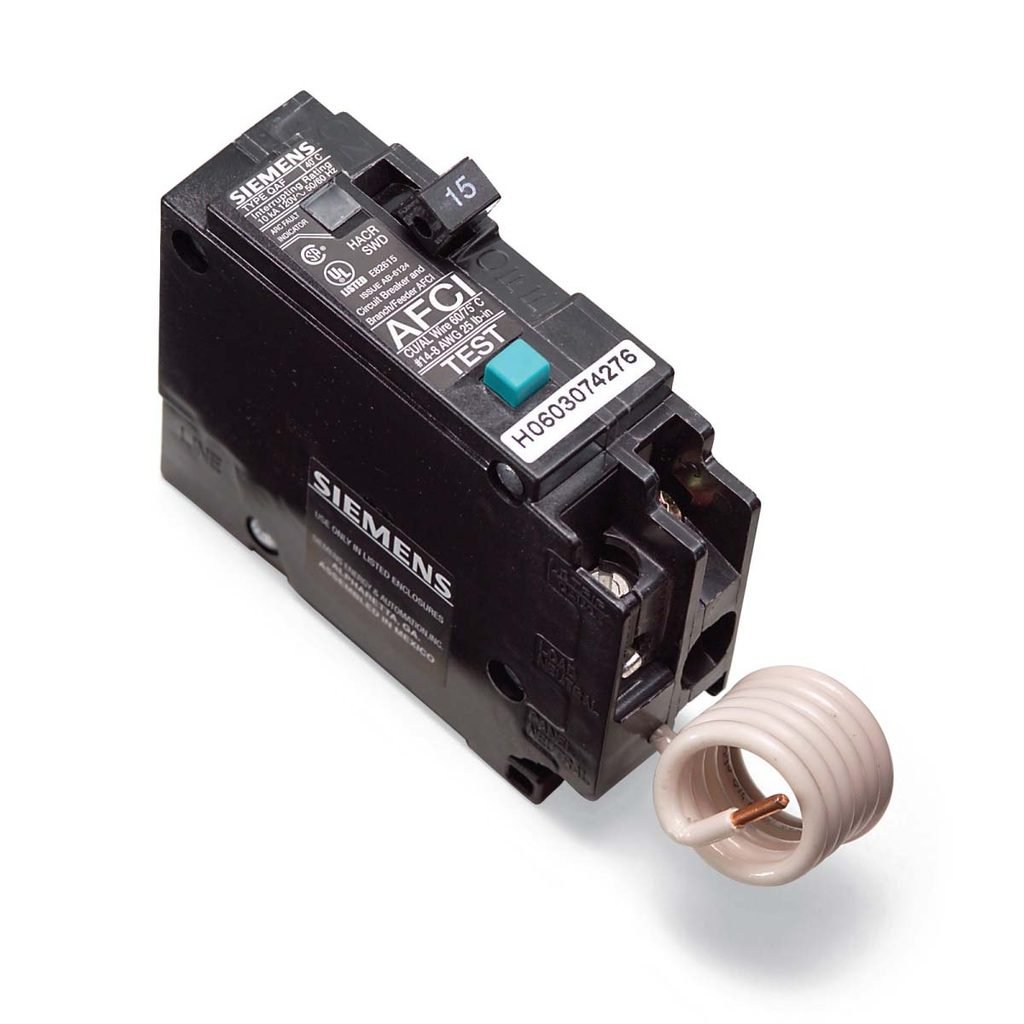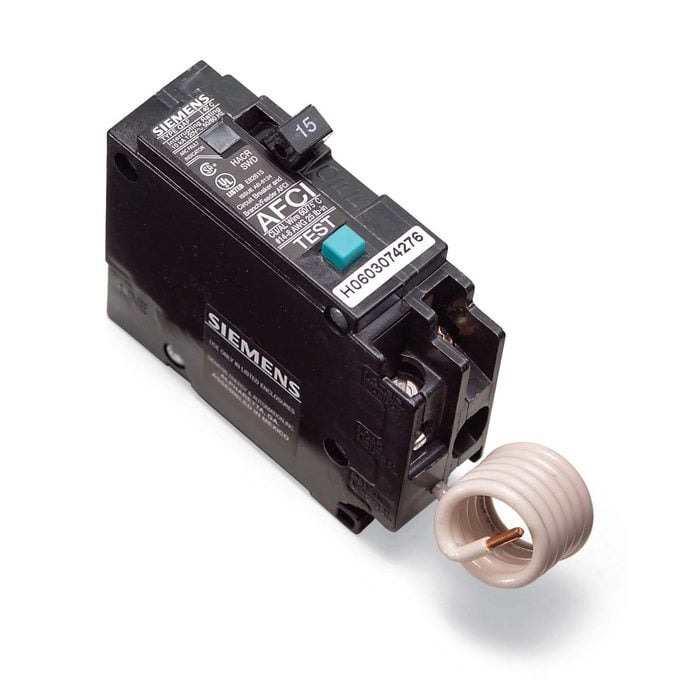Fixing a Sensitive Arc Fault Circuit Breaker
Updated: Jul. 20, 2023

How to diagnose and fix an arc fault circuit interrupter (AFCI) problem.
On This Page
AFCI in main panel
If you have a problem with an AFCI (arc fault circuit interrupter) shutting off in you main electrical panel, you’re not alone. Arc fault circuit interrupters are prone to “nuisance tripping,” which is probably what you’re experiencing. Fortunately, fixing a sensitive arc fault circuit breaker isn’t too much of a hassle. You’ll find AFCIs in the main electrical panel or a subpanel. Reset an arc fault breaker like you would a standard circuit breaker.
What Does an AFCI Do?
AFCIs protect against fires caused by arcing faults. Because of this, they are now a requirement in new or remodeled bedrooms. AFCIs are able to sense an arc, which is an electrical “leak”. This leak is caused when a hot wire touches a neutral or ground but doesn’t trigger the circuit breaker. Although current-sensing circuitry enables AFCIs to detect arcing conditions, unintended trickles of current may also cause the breaker to shut off (AFCIs are very sensitive!).
Solve an AFCI tripping problem
To solve the nuisance tripping problem and provide arc fault protection, start with things you can do yourself. If you identify one of these sources, you’ll have to replace the electrical item.
Unplug or turn off surge protectors plugged into bedroom outlets, fluorescent lights with electronic ballasts, and lighting controls with LED displays that are on the AFCI circuit. They sometimes allow current “leakage” that can trip the AFCI. This can create a situation where a circuit breaker keeps tripping without a load.
Damage or deterioration to wires or cords also causes arcing faults and will trip the circuit. To prevent this, avoid pushing furniture against plugs in an outlet.
Usually, unplugging electrical and electronic devices solves the problem. If it doesn’t, hire an electrician to install a new arc fault breaker in the electrical panel. There’s no reliable method for testing AFCIs (the test button isn’t always accurate). If the nuisance tripping stops, then the old arc fault breaker was probably defective.
If the arc fault breaker still trips, the electrician then needs to track down the cause by going into each switch, receptacle and light box to look for a wiring problem. Often it is as simple as finding that someone else jammed the wires into boxes quickly. If the wrong two wires make contact, they can trip an AFCI.
The National Electrical Code required AFCIs for receptacle outlets in bedrooms beginning Jan. 1, 2002 (local jurisdictions may have additional requirements). Don’t confuse AFCIs with ground fault circuit interrupters (GFCIs). GFCIs are designed to protect against shocks, not arcs.
